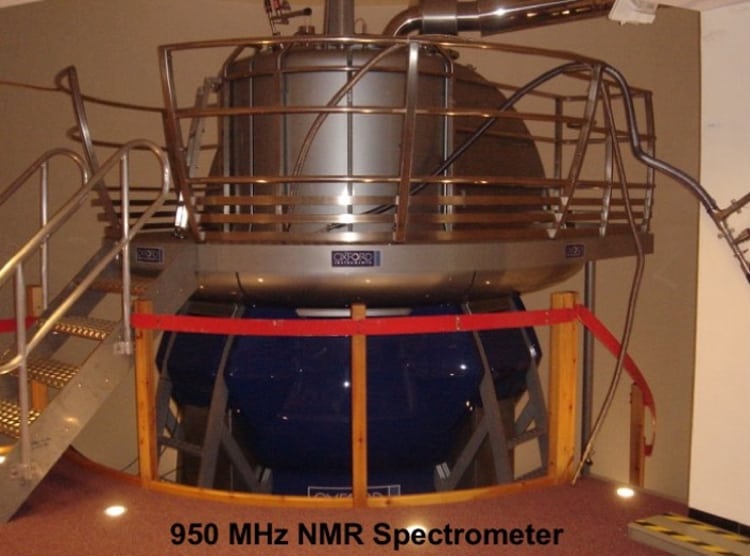
NMR Spectrometer at Oxford University
Global efforts to map the genes of humans and other creatures may have revealed the basic building blocks of living organisms, but without better knowledge of the way the millions of macromolecules within cells assemble and interact, scientists are still some way from fully understanding how life works.
In an effort to improve the understanding of how these individual components come together to create the molecular machines that carry out basic biological functions, researchers at Oxford University are undertaking a project to upgrade the institution’s ultra-high field 950MHz NMR spectroscopy system.
The upgrade is part of a wider £20m investment in very high and ultra-high field NMR spectroscopy by EPSRC, alongside the Biotechnology and Biosciences Research Council (BBSRC), the Medical Research Council (MRC) and Natural Environment Research Council (NERC).
NMR spectroscopy is used to determine the molecular structure of a wide range of materials. The technique can provide detailed information on the topology, dynamics and three-dimensional structure of these materials, including biological components in solution.
It is the only technique that can offer a detailed view of biological components under conditions similar to those that occur in living organisms, or even in the living cell itself.
The technology consists of large, powerful magnets, alongside electronics used to transmit and detect signals.
The upgrade to the Oxford system will include the purchase of a “cryoprobe”, high-sensitivity electronics designed to boost the system’s signal detection capabilities, according to project leader Prof Christina Redfield, of the Department of Biochemistry at Oxford University.
In a cryoprobe, the electronics are cooled in a stream of helium gas at a temperature of around 20K. This increases the sensitivity of the probe, and reduces the level of thermal noise generated by the electronic circuits and components within the signal receiver itself.
“In NMR the signal-to-noise ratio is a crucial factor, and this cryoprobe improves that ratio by up to a factor of three, meaning we can collect the data more quickly, or we can study more difficult samples,” said Redfield.
In particular, the concentration of the solution in which the samples are held is an important factor in determining the signal-to noise ratio, she said. This means there is a limit to how dilute samples can be made.
“By having a probe which improves the signal-to-noise ratio, it means you can look at more dilute protein samples,” she said. “Many proteins are unhappy in solutions at high concentrations, so being able to work at lower concentrations means that there are more proteins available for us to study.”
The upgrade will also include a sophisticated sample changer, which will allow for more automated data collection, and for samples to be held at a pre-set temperature.
The upgrade will cost around £500,000, compared to £5m for a new NMR system with similar capabilities.
Alongside Oxford University, seven other universities are also receiving funding as part of the UK investment in NMR infrastructure.
Birmingham University will install a 1GHz system for use in medical research, such as real-time measurements of cancer cell metabolism, and in drug discovery, for example.
Warwick University will also be installing a 1GHz system, for use predominantly in materials science research. The system offers the potential for improved pharmaceutical formulations and drug delivery, and better quality materials for energy and catalysis, the university said.
Meanwhile, Edinburgh, Leicester, Nottingham, Liverpool and Sheffield Universities are all receiving funding to upgrade existing 800MHz NMR systems, for use in chemistry, materials science and biology research.





Nanogenerator consumes CO2 to generate electricity
Whoopee, they've solved how to keep a light on but not a lot else.